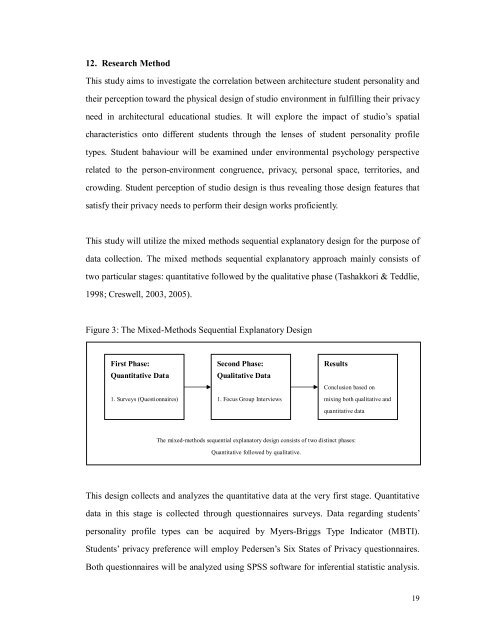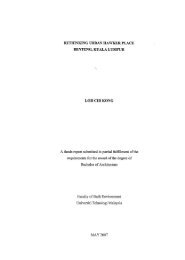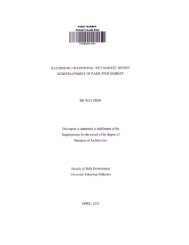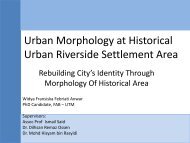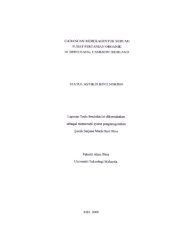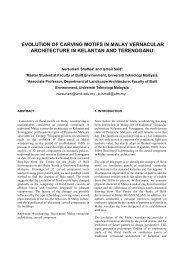RESEARCH PROPOSAL - Faculty of Built Environment - Universiti ...
RESEARCH PROPOSAL - Faculty of Built Environment - Universiti ...
RESEARCH PROPOSAL - Faculty of Built Environment - Universiti ...
You also want an ePaper? Increase the reach of your titles
YUMPU automatically turns print PDFs into web optimized ePapers that Google loves.
12. Research MethodThis study aims to investigate the correlation between architecture student personality andtheir perception toward the physical design <strong>of</strong> studio environment in fulfilling their privacyneed in architectural educational studies. It will explore the impact <strong>of</strong> studio’s spatialcharacteristics onto different students through the lenses <strong>of</strong> student personality pr<strong>of</strong>iletypes. Student bahaviour will be examined under environmental psychology perspectiverelated to the person-environment congruence, privacy, personal space, territories, andcrowding. Student perception <strong>of</strong> studio design is thus revealing those design features thatsatisfy their privacy needs to perform their design works pr<strong>of</strong>iciently.This study will utilize the mixed methods sequential explanatory design for the purpose <strong>of</strong>data collection. The mixed methods sequential explanatory approach mainly consists <strong>of</strong>two particular stages: quantitative followed by the qualitative phase (Tashakkori & Teddlie,1998; Creswell, 2003, 2005).Figure 3: The Mixed-Methods Sequential Explanatory DesignFirst Phase:Quantitative Data1. Surveys (Questionnaires)Second Phase:Qualitative Data1. Focus Group InterviewsResultsConclusion based onmixing both qualitative andquantitative dataThe mixed-methods sequential explanatory design consists <strong>of</strong> two distinct phases:Quantitative followed by qualitative.This design collects and analyzes the quantitative data at the very first stage. Quantitativedata in this stage is collected through questionnaires surveys. Data regarding students’personality pr<strong>of</strong>ile types can be acquired by Myers-Briggs Type Indicator (MBTI).Students’ privacy preference will employ Pedersen’s Six States <strong>of</strong> Privacy questionnaires.Both questionnaires will be analyzed using SPSS s<strong>of</strong>tware for inferential statistic analysis.19


